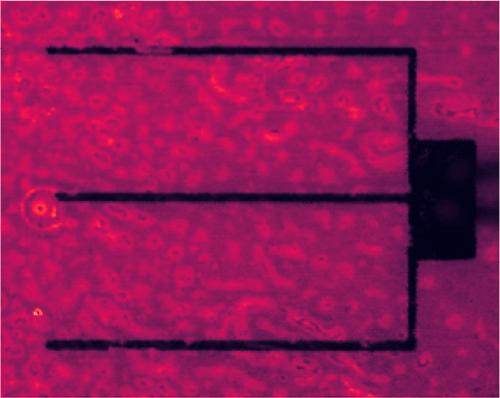当前位置:
X-MOL 学术
›
ACS Appl. Mater. Interfaces
›
论文详情
Our official English website, www.x-mol.net, welcomes your feedback! (Note: you will need to create a separate account there.)
Correlating Molecular Precursor Interactions with Device Performance in Solution-Processed Cu2ZnSn(S,Se)4 Thin-Film Solar Cells
ACS Applied Materials & Interfaces ( IF 8.3 ) Pub Date : 2024-06-27 , DOI: 10.1021/acsami.4c05321 Raphael Agbenyeke 1 , Alice Sheppard 1 , Jacques Keynon 2 , Nada Benhaddou 2 , Nicole Fleck 3 , Valentina Corsetti 1 , Mohammed A. Alkhalifah 1, 4 , Devendra Tiwari 3 , Jake W. Bowers 2 , David J. Fermin 1
ACS Applied Materials & Interfaces ( IF 8.3 ) Pub Date : 2024-06-27 , DOI: 10.1021/acsami.4c05321 Raphael Agbenyeke 1 , Alice Sheppard 1 , Jacques Keynon 2 , Nada Benhaddou 2 , Nicole Fleck 3 , Valentina Corsetti 1 , Mohammed A. Alkhalifah 1, 4 , Devendra Tiwari 3 , Jake W. Bowers 2 , David J. Fermin 1
Affiliation

|
Research efforts aimed at improving the crystal quality of solution-processed Cu2ZnSn(S,Se)4 (CZTSSe) absorbers have largely employed delicate pre- and postprocessing strategies, such as multistep selenization, heat treatment in mixed chalcogen atmospheres, and multinary extrinsic doping that are often complex and difficult to reproduce. On the other hand, understanding and tuning chemical interactions in precursor inks prior to the thin-film deposition have received significantly less attention. Herein, we show for the first time how the complexation of metallic and chalcogen precursors in solution have a stark influence on the crystallization and optoelectronic quality of CZTSSe absorbers. By varying thiourea to metal cation ratios (TU/M) in dimethylformamide (DMF) and isopropyl alcohol (IPA)-based inks, we observed the formation of nanoscale metal–organic complexes and submicron size aggregates which play a key role in the morphology of the precursor layers obtained by spin-coating and drying steps. We also identify the primary cations in the complexation and assembling processes in solution. The morphology of the precursor film, in turn, has an important effect on grain growth and film absorber structure after the reactive annealing in the presence of Se. Finally, we establish a link between metal complexes in precursor solutions and device performance, with power conversion efficiency increasing from approximately 2 to 8% depending on the TU/M and Cu/(Zn + Sn) ratios.
中文翻译:

溶液处理 Cu2ZnSn(S,Se)4 薄膜太阳能电池中分子前体相互作用与器件性能的关联
旨在提高溶液加工 Cu 2 ZnSn(S,Se) 4 (CZTSSe) 吸收剂晶体质量的研究工作主要采用了精细的预处理和后处理策略,例如多步硒化、混合硫族气氛中的热处理以及多元外在掺杂通常很复杂且难以重现。另一方面,在薄膜沉积之前了解和调整前体墨水中的化学相互作用却受到的关注明显较少。在此,我们首次展示了溶液中金属和硫族元素前驱体的络合如何对 CZTSSe 吸收剂的结晶和光电质量产生明显影响。通过改变二甲基甲酰胺 (DMF) 和异丙醇 (IPA) 油墨中硫脲与金属阳离子的比例 (TU/M),我们观察到纳米级金属有机复合物和亚微米尺寸聚集体的形成,它们在通过旋涂和干燥步骤获得的前体层。我们还确定了溶液中络合和组装过程中的主要阳离子。反过来,在 Se 存在下进行反应退火后,前体薄膜的形态对晶粒生长和薄膜吸收结构具有重要影响。最后,我们在前驱体溶液中的金属配合物和器件性能之间建立了联系,根据 TU/M 和 Cu/(Zn + Sn) 比率,功率转换效率从大约 2% 增加到 8%。
更新日期:2024-06-27
中文翻译:

溶液处理 Cu2ZnSn(S,Se)4 薄膜太阳能电池中分子前体相互作用与器件性能的关联
旨在提高溶液加工 Cu 2 ZnSn(S,Se) 4 (CZTSSe) 吸收剂晶体质量的研究工作主要采用了精细的预处理和后处理策略,例如多步硒化、混合硫族气氛中的热处理以及多元外在掺杂通常很复杂且难以重现。另一方面,在薄膜沉积之前了解和调整前体墨水中的化学相互作用却受到的关注明显较少。在此,我们首次展示了溶液中金属和硫族元素前驱体的络合如何对 CZTSSe 吸收剂的结晶和光电质量产生明显影响。通过改变二甲基甲酰胺 (DMF) 和异丙醇 (IPA) 油墨中硫脲与金属阳离子的比例 (TU/M),我们观察到纳米级金属有机复合物和亚微米尺寸聚集体的形成,它们在通过旋涂和干燥步骤获得的前体层。我们还确定了溶液中络合和组装过程中的主要阳离子。反过来,在 Se 存在下进行反应退火后,前体薄膜的形态对晶粒生长和薄膜吸收结构具有重要影响。最后,我们在前驱体溶液中的金属配合物和器件性能之间建立了联系,根据 TU/M 和 Cu/(Zn + Sn) 比率,功率转换效率从大约 2% 增加到 8%。






































 京公网安备 11010802027423号
京公网安备 11010802027423号